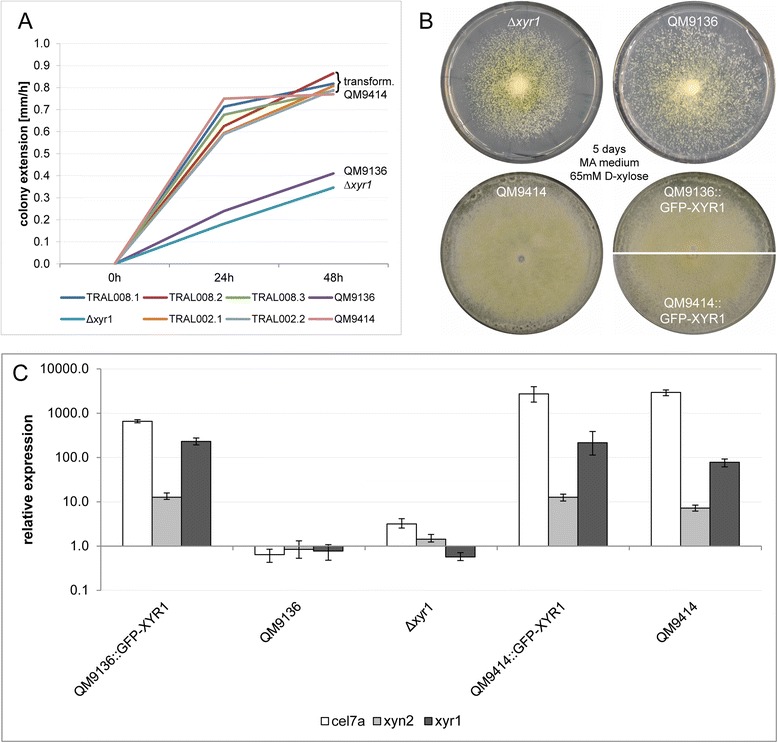Figure 3.

Gene replacement with full-length GFP-XYR1 construct rescues XYR1-loss-of-function phenotype of QM9136. (A) QM9136::GFP-XYR1 transformants (TRAL008 clones 1 to 3) grow on 65 mM D-xylose show colony extension speeds comparable to the moderate producer strain QM9414 and QM9414::GFP-XYR1 transformants (TRAL002 clones 1 and 2). QM9136 and ∆xyr1 are sensitive to 65 mM D-xylose and display significantly reduced colony extension speeds. (B) Macroscopic colony phenotypes of GFP-XYR1 transformants TRAL002 and TRAL008, and control strains after 5 days on MA medium supplemented with 65 mM D-xylose. The XYR1-loss-of-function strains ∆xyr1 and QM9136 develop a slower and less dense growing mycelium, however, start conidiation earlier, compared to the reference strain QM9414. Expression of GFP-XYR1 restores wild type morphology in QM9136 but does not alter QM9414. (C) Gene expression of the major cellulase cel7a, xylanase xyn2 and transcription factor xyr1 itself, induced by one hour exposure to 1.4 mM sophorose, are restored in QM9136::GFP-XYR1 transformants (TRAL008). The XYR1-loss-of-function strains QM9136 and ∆xyr1 show now transcriptional response to induction by sophorose. Both cellulase-positive controls, QM9414 and QM9414::GFP-XYR1 transformants (TRAL002) respond as expected with upregulated cel7a, xyn2 and xyr1 expression. Error bars show standard deviations (n = 6 from three experimental and two biological replicates).
